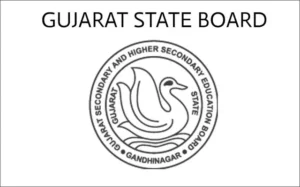Emma Argues With Principal Figgins
9 min read
Introduction
Emma argues with Principal Figgins – a clash of two strong personalities, fueled by passion and determination. In the halls of McKinley High School, tensions rise as Emma, the fiery and outspoken student, finds herself at odds with the stern authority figure that is Principal Figgins. What caused this epic showdown? Join us as we delve into their perspectives on the situation, witness how the argument escalated, and ultimately discover a resolution filled with valuable lessons. Brace yourself for a rollercoaster ride of emotions in this captivating tale of conflict!
The Conflict: What Caused the Argument?
The conflict between Emma and Principal Figgins started brewing when Emma disagreed with the school’s decision to cut funding for the arts program. As a passionate advocate for the arts, Emma believed that this decision was detrimental to students’ creativity and overall education.
Emma felt strongly that the arts play a vital role in fostering critical thinking skills, self-expression, and emotional intelligence. She saw firsthand how participation in art activities boosted students’ confidence and helped them succeed academically.
On the other hand, Principal Figgins had to make tough decisions based on limited resources. He argued that with budget constraints, it was necessary to prioritize core subjects like math and science over extracurricular activities such as art programs.
Emma could not accept this reasoning as she believed that a well-rounded education encompassed both academic subjects and artistic expression. She expressed her concerns during faculty meetings but felt unheard by Principal Figgins, who seemed more focused on meeting standardized test score goals than nurturing student creativity.
As tensions grew between Emma and Principal Figgins, their disagreements spilled into public forums where parents became divided over which side to support. The argument escalated further when media outlets picked up on the story, amplifying its impact within the community.
Despite their differences, both Emma and Principal Figgins shared a genuine desire to provide quality education for all students. Eventually, they realized that finding common ground would be more productive than perpetuating an adversarial relationship.
Through dialogue facilitated by concerned parents and community members who recognized the importance of arts education, they reached a compromise. The school agreed to reinstate some funding for art programs while also exploring alternative ways of supplementing resources through grants or partnerships with local organizations.
This conflict taught everyone involved valuable lessons about listening empathetically to different perspectives while working towards innovative solutions that benefit all stakeholders – most importantly, the students themselves.
Emma’s Perspective on the Situation
When it comes to conflicts, everyone has their own side of the story. And in this case, Emma definitely had a lot to say about her argument with Principal Figgins.
From Emma’s perspective, she felt like her voice wasn’t being heard. As a dedicated student and advocate for change, she had been trying to express her concerns about the school’s outdated policies for months. But every time she approached Principal Figgins, he seemed dismissive and uninterested.
Emma believed that her ideas were valid and could greatly benefit the students at McKinley High School. She saw herself as a catalyst for positive change, someone who could make a difference in her community.
But when Principal Figgins continuously shut down her proposals without even considering them, Emma couldn’t help but feel frustrated and disheartened. It was as if all of her efforts were falling on deaf ears.
In addition to feeling unheard, Emma also felt belittled by Principal Figgins’ condescending tone during their argument. Instead of engaging in an open dialogue and respecting Emma’s viewpoint, he resorted to patronizing remarks that only fueled the fire within her.
For Emma, this conflict represented more than just an argument with authority; it symbolized a clash between old-fashioned thinking and progressive ideas. She firmly believed that embracing change was essential for growth and improvement within any institution or society.
So when things escalated during their heated exchange – words were raised, emotions ran high – it became clear that there was no easy resolution in sight.
Throughout this ordeal though, one thing remained certain: Emma refused to back down from fighting for what she believed in. This disagreement with Principal Figgins only ignited a stronger determination within her to challenge the status quo and fight against injustice wherever she found it.
Stay tuned for our next blog section where we dive into Principal Figgin’s perspective on this situation!
Principal Figgins’ Perspective on the Situation
From Principal Figgins’ point of view, the argument with Emma was an unfortunate but necessary confrontation. As the head of McKinley High School, he holds a tremendous responsibility to maintain order and discipline among students. When Emma challenged his decision regarding a disciplinary action, he felt compelled to stand his ground.
In his eyes, it wasn’t about exerting power or control over Emma; instead, it was about upholding the rules and policies that govern the school community. He believed that by engaging in a respectful debate with Emma, he could impart upon her important life lessons about authority and following guidelines.
Principal Figgins also understood that disagreements are bound to happen in any educational institution. While he may not have enjoyed arguing with Emma, he saw this as an opportunity to demonstrate how conflicts can be resolved through open communication and understanding.
Throughout their conversation, Principal Figgins maintained a calm demeanor despite feeling frustrated at times. He genuinely listened to Emma’s concerns and tried his best to explain his reasoning behind the decision she disagreed with. Although they didn’t see eye-to-eye in the end, Principal Figgins hoped that their interaction would help foster mutual respect between them moving forward.
By sharing his perspective on this situation without resorting to aggression or dismissiveness towards Emma’s views, Principal Figgins aimed to set an example for other students who may find themselves questioning authority figures. He wanted them to understand that respectful dialogue is key when challenging decisions while still maintaining respect for those in positions of power.
Principal Figgin’s perspective reminds us all of the importance of effective communication and finding common ground even during moments of disagreement. It serves as a reminder that constructive conversations can lead not only to resolutions but also personal growth for everyone involved.
How the Argument Escalated
As tensions rose between Emma and Principal Figgins, so too did the intensity of their argument. It began with a simple misunderstanding, but quickly spiraled out of control.
First, Emma tried to explain her side of the story calmly and rationally. She felt that her concerns were valid and deserved to be heard. However, Principal Figgins seemed dismissive and unwilling to listen. This lack of understanding only fueled Emma’s frustration.
As voices grew louder, both parties became more entrenched in their positions. Emma felt belittled and disrespected by Principal Figgins’ refusal to acknowledge her perspective. Conversely, Principal Figgins saw Emma as defiant and disrespectful for challenging his authority.
With each passing word, the argument escalated further. Accusations flew back and forth without any attempt at finding common ground or understanding one another’s point of view. The initial issue became secondary as personal attacks took center stage.
Tempers flared until finally reaching a boiling point where neither party was willing to back down or compromise. The once civil conversation had turned into a full-blown confrontation filled with anger and resentment.
In the heat of the moment, it can be easy for arguments to spiral out of control like this one did between Emma and Principal Figgins…
Resolution and Lessons Learned
After their heated argument, Emma and Principal Figgins knew they had to find a way to resolve their conflict. They both recognized that letting the disagreement fester would only lead to more tension and animosity within the school community.
Emma took the initiative and scheduled a meeting with Principal Figgins to address their differences. During this meeting, they listened attentively to each other’s perspectives without interrupting or becoming defensive. This allowed them to gain a deeper understanding of where the other person was coming from.
As they continued their conversation, Emma and Principal Figgins realized that there were underlying issues contributing to the argument. They discovered that miscommunication and misunderstandings had played a significant role in escalating tensions between them.
To prevent similar conflicts in the future, Emma proposed implementing regular communication workshops for staff members at the school. She believed that these workshops could help improve interpersonal relationships by fostering open dialogue and understanding among colleagues.
Principal Figgins agreed with Emma’s suggestion, acknowledging that better communication skills were essential for effective leadership within the school community. He also promised to schedule regular check-ins with all staff members individually, providing an opportunity for open discussions about any concerns or grievances they may have.
In addition, both Emma and Principal Figgins committed themselves to practicing active listening techniques moving forward. They understood that truly hearing each other’s thoughts and emotions was crucial in preventing future misunderstandings.
By actively working towards resolving their conflict through open communication, empathy, and a commitment to personal growth, Emma and Principal Figgins not only found a resolution but also learned valuable lessons about effective conflict management.
Their experience highlighted how important it is for individuals in positions of authority or influence to foster healthy communication channels within organizations. It also served as a reminder of the power of empathy – taking into consideration others’ viewpoints can go a long way in mitigating disputes before they escalate further.
Conclusion:
As we wrap up this rollercoaster of a story, it’s important to reflect on the events that transpired between Emma and Principal Figgins. Throughout their argument, both parties had valid points and emotions running high. However, instead of finding common ground or seeking understanding, they allowed their frustrations to escalate the situation further.
Emma believed she was being treated unfairly by Principal Figgins when her concerns about school policies were dismissed without proper consideration. She felt unheard and disrespected, which fueled her anger and determination to stand up for what she believed in.
On the other hand, Principal Figgins saw himself as someone who needed to maintain order and uphold rules within the school system. He may have thought he was making decisions based on what was best for the majority of students, even if it meant disregarding Emma’s individual concerns.
Unfortunately, neither party took the time to truly listen to each other’s perspectives or find a compromise. The argument quickly turned into a heated exchange of words with neither side willing to back down.
In any conflict resolution process like this one, it is essential for both parties involved to communicate openly and honestly while showing empathy towards one another. This can help prevent misunderstandings from escalating into full-blown arguments that only create more tension within relationships.
It is crucial for individuals like Emma and Principal Figgins – as well as all of us –to remember that respectful communication is key in resolving conflicts peacefully. By taking time to understand different viewpoints and actively listening without judgment or defensiveness, we can find common ground and work towards solutions together.
Remember: conflict doesn’t always have to end in an argument; there are better ways forward if we approach with open minds!
Stay tuned for our next blog post where we delve into effective communication techniques that can be applied in various situations!
FAQ
Q: What led to the argument between Emma and Principal Figgins?
A: The argument between Emma and Principal Figgins stemmed from a difference in opinion regarding an issue at school.
Q: How did the conflict escalate?
A: The conflict escalated as both Emma and Principal Figgins stood their ground, refusing to back down or find a middle ground. Their emotions got the best of them, leading to heated words being exchanged.
Q: Were there any lessons learned from this situation?
A: Yes, both parties involved have hopefully learned valuable lessons from this experience. It is important to listen to each other’s perspectives, communicate openly and respectfully, and seek compromise when facing disagreements.
Q: How was the conflict resolved?
A: Eventually, cooler heads prevailed, and Emma and Principal Figgins were able to sit down together for a calm conversation. Through open dialogue and understanding each other’s viewpoints better, they were able to reach a resolution that satisfied both parties.
Q: Can conflicts be beneficial in some cases?
A: Conflict can often lead to growth and change if handled properly. It allows individuals or groups with differing opinions to challenge assumptions, explore new ideas, and ultimately find innovative solutions.







